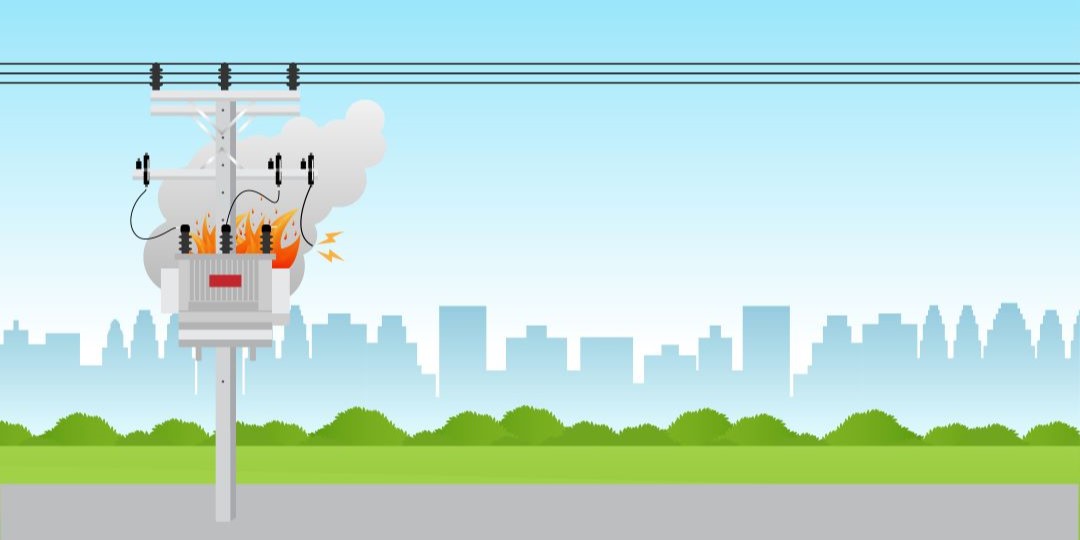At 1:34 am on Thanksgiving Day 2016, NAES staff at a power plant in Kentucky were rudely awakened by an alarm. On first inspection, Plant Manager Steve Holbrook found that the transformer for Combustion Turbine #5 had caught fire and shut down.
Holbrook established LO/TO, had his team install scaffolding to allow internal inspection and put in an urgent call to NAES Engineering Services for help. Steve Hynes took on project manager duties, with lead engineering provided by Henry Scheck and Bill Lovejoy. They worked up seven possible solutions for evaluation. Meanwhile, the insurance adjuster arrived and began reviewing maintenance records and design documentation for the failed unit to sort out claims options.
After weighing delivery schedules and downtime costs, the team concluded that only one of their seven options was feasible: Procure a new, currently available transformer that was the closest possible match to the failed unit. The insurance adjuster joined the consensus on this solution.
Their search turned up a unit in Houston, a Prolec GE owned by ProEnergy Services, a firm that provides turbine services as well as O&M. To minimize downtime – what with holidays, transport challenges and weather – they decided it would best serve the client, LS Power, to consolidate the transport, installation, test and startup as a package under ProEnergy.
They still had to deal with the failed unit. “When the plant was built, the transformer had been placed on a pad within a containment surrounded by two blast walls,” said Hynes. “In case we didn’t have enough challenges already, the balance of the plant and switchyard had been built around the transformer after it was set.” The NAES team priced the job of jacking up the failed unit and sliding it out of position in one piece, with the idea of having ProEnergy disassemble it. However, the cost was prohibitive, and the insurance adjuster had seen enough of the internal damage to declare the unit a total loss.
Hynes located and retained a New Jersey outfit to perform demolition in place and salvage the scrap. “They brought in four guys with Sawzalls and a gross of Sawzall blades,” Hynes quipped. “I was skeptical at first, but they were very professional in their oversight and execution and complied fully with our safety requirements.”
The client paid for expedited transport of the new unit and accessory parts from Texas and Missouri. The transformer arrived at a nearby rail side yard on New Year’s Eve, demolition was completed January 5, and the new unit was trucked to the site and placed on the pad on January 8.
“We only had one shot at getting this right,” said Hynes, “so we called in additional support for engineering and installation.” This decision paid off. Following testing, validation and client review, the new transformer was energized on January 28. CT #5 was started the following day and tested. The unit was brought back on line January 30 to tune it to its full output capability, and the team cleared it for full output on January 31 – just over two months from that rude awakening on Thanksgiving morning.
